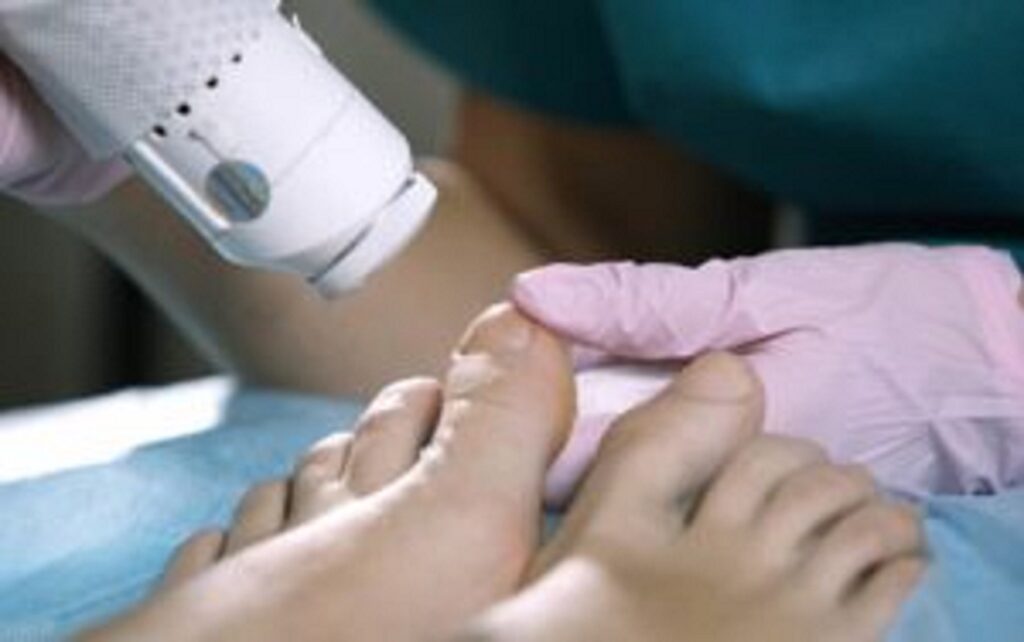What are fungal nail infections?
Dermato comes from the Greek word derma δέρμα meaning skin and phytes φυτόν meaning plant. A fungal nail affected by a dermatophyte is the medical term for what is then commonly known as a fungal cell. Under microscope, a fungal cell shows a filamentous (thin and long) shape.
The appearance of nails including fingernails that have been affected by fungal cells is medically termed Onychomycosis. Onycho means nail when translated from Greek and mycosis translates as fungus. Fungal cells then feast off of keratin which is their source of sustenance.
Moreover, it is estimated that Onychomycosis affects around 10% of the general European populace (Westerberg et al., 2013). This means that out of every 100 people at least 10 of us can expect to be affected throughout our lifetime with the prevalence increasing especially as we progress through life and our immunity gets affected via the natural ageing process and ill-health.
Overview of the current fungal species and fungal species grouped into genera commonly found in the routine clinical lab.
- Epidermophyton floccosum-A
- Microsporum audouinii-A
- Microsporum canis-Z
- Microsporum ferrugineum-A
- Trichophyton benhamiae series (T. benhamiae-Z, T. concentricum-A, T. eriotrephon, T. verrucosum-Z)
- Trichophyton bullosum-Z
- Trichophyton mentagrophytes series (T. equinum-Z, T. interdigitale-A, T. mentagrophytes-Z, T. tonsurans-A)
- Trichophyton rubrum series T.rubrum-A, T.soudanese-A, T. violaceum-A
- Trichophyton simii series (T. quinckeanum-Z, T. schoenleinii-A, T. simii-Z)
Note. A, anthropophilic,* (*preference for humans), Z, zoophilic,** (preference for animals especially, of an insect). (Elewski, 1998)
Nenoff et al., (2012) cite *onychomycosis, (*fungal nails), may then represent an important predictor for the development of diabetic foot syndrome and also foot ulcers. (Journal unknown source: Professor Hay).
Where can we get a fungal infection on toes from?
Shared showers, walking barefoot in communal areas, wearing someone else’s shoes, (such as renting bowling shoes or ski boots), walking barefoot on hotel carpets, living with someone who already has infection in toenail or previous trauma to the nails are just a few ways in which we can pick up fungal infection of the toenail and infection spreading. It also does appear that some individuals demonstrate a genetic susceptibility to this toe nail infection.
According to Ghannoum et al., (2014) dermatophytes can then be classified into 3 generea known as Trichophyton, Epidermophyton, and Microsporum. In humans, the commonest superficial fungal infections are trichophyton mentagrophytes and also rubrum presentations. Rarely we may observe a non-fungal mould presentation such as S. brevicaulis and Scopulariopsis presentation.
What other things should I look out for?
If we suffer from hot/sweaty feet, look for antibacterial socks such as bamboo or silver-impregnated socks. Avoid also man-made materials such as nylon or any moisture-retaining materials to reduce your risk of having nail fungus. Avoiding nail varnish and keeping the feet well aerated with lots of light is particularly good for toenails. Smoking and immunosuppressant therapy can also increase the prevalence of dermatophyte infection. (Rich et al., 2003, Sigurgeirsson et al., 2014).
Should I get my nails tested I am sure I have a fungal nail?
It is important due to the duration of treatment required that an as accurate as possible assessment analysing your nail clippings is undertaken, (even with small false positives, false negatives). Since there are occasions where a nail(s) can present with psoriasis, lichen planus, bacterial infections, contact dermatitis, traumatic onychodystrophies, pachyonychia congenita, nail bed tumours, yellow-nail syndrome, idiopathic onycholysis, trauma or onychorrhexis to name a few. (Elewski, 1998 & Young et al., 2008).
When nail clippings are cultured in a lab, the difficulty is that under microscopy it can be difficult to distinguish which strain is present especially as many of the generea can be similar in appearance. Given that there can also be more than just one presenting fungal, mould or yeast presentation affecting the same nail can also further complicate certain cases.
At the Chelsea clinic, we also offer bespoke treatment protocols specific to your nail(s) presentation. With a range of treatment strategies in place, we will discuss in detail with you whether we consider aside from specific topical medicaments available whether laser, temporarily remove the nail under local anaesthesia and/or any other treatments will be most suitable for you.
If you have severe fungal nail infection, our podiatrist can assist as well as discuss with you all treatment options. For more information call us ☎️ at + 44 (0) 20 7 101 4000 or email us 📩 at info@thechelseaclinic.uk. We look forward to speaking with you.
References:
Eisman, S & Sinclair, R (2014). Fungal nail infection: diagnosis and also management. BMJ 348:g1800.
Elewski, B. (1998). Onychomycosis: Pathogenesis, Diagnosis, and Management. Clin Microbiol Rev.11(3): 415–429.
Ghannoum, M & Isham, N (2014). Fungal Nail Infections (Onychomycosis): A Never-Ending Story? PLoS Pathog 10(6): e1004105.
Graser, Y, Monod, M, Bouchara, J.P, Dukik, K, Nenoff, P, Largl A, Kupsch, C, Zhan, P, Packeu, A, Chaturvedi, V & de Hoog, S (2018). New insights in dermatophyte research. Medical Mycology 56, S2–S9.
Hoon Lee, M, Min Hwan, S, Kyu Suh, M, Yim Ha, G, Heesoo, K and Young Park J (2012). Onychomycosis Caused by Scopulariopsis brevicaulis: Report of Two Cases. Ann Dermatol. 24(2): 209–213.
Nenoff P, Ginter-Hanselmayer G & Tietz H.J (2012). Fungal nail infections – an update: Part 1 – Prevalence, epidemiology, predisposing conditions, as well as differential diagnosis. Der Hautarzt 63(1):30-8.
Oakley, A. (2022, February, 26). Fungal nail infections [Blog post]. Retrieved from https://dermnetnz.org/topics/fungal-nail-infections.
Rich, P, Harkless, L, Atillasoy, E (2003). Dermatophyte Test Medium Culture for Evaluating Toenail Infections in Patients With Diabetes. Diabetes Care 26:1480–1484.
Sigurgeirsson, B & Steingrímsson Ó (2014). Risk factors associated with onychomycosis. JEADV: 18, 48–51.
Steinbach, W.J, Benjamin, D.K, Kontoyiannis, D.P, Perfect, J.R, Lutsar, I, Marr, K, Lionakis, M.S, Torres, H.A, Jafri, H, Walsh, T.J. (2004). Infections Due to Aspergillus terreus: A Multicenter Retrospective Analysis of 83 Cases. Clinical Infectious Diseases 39(2): 192–198.




